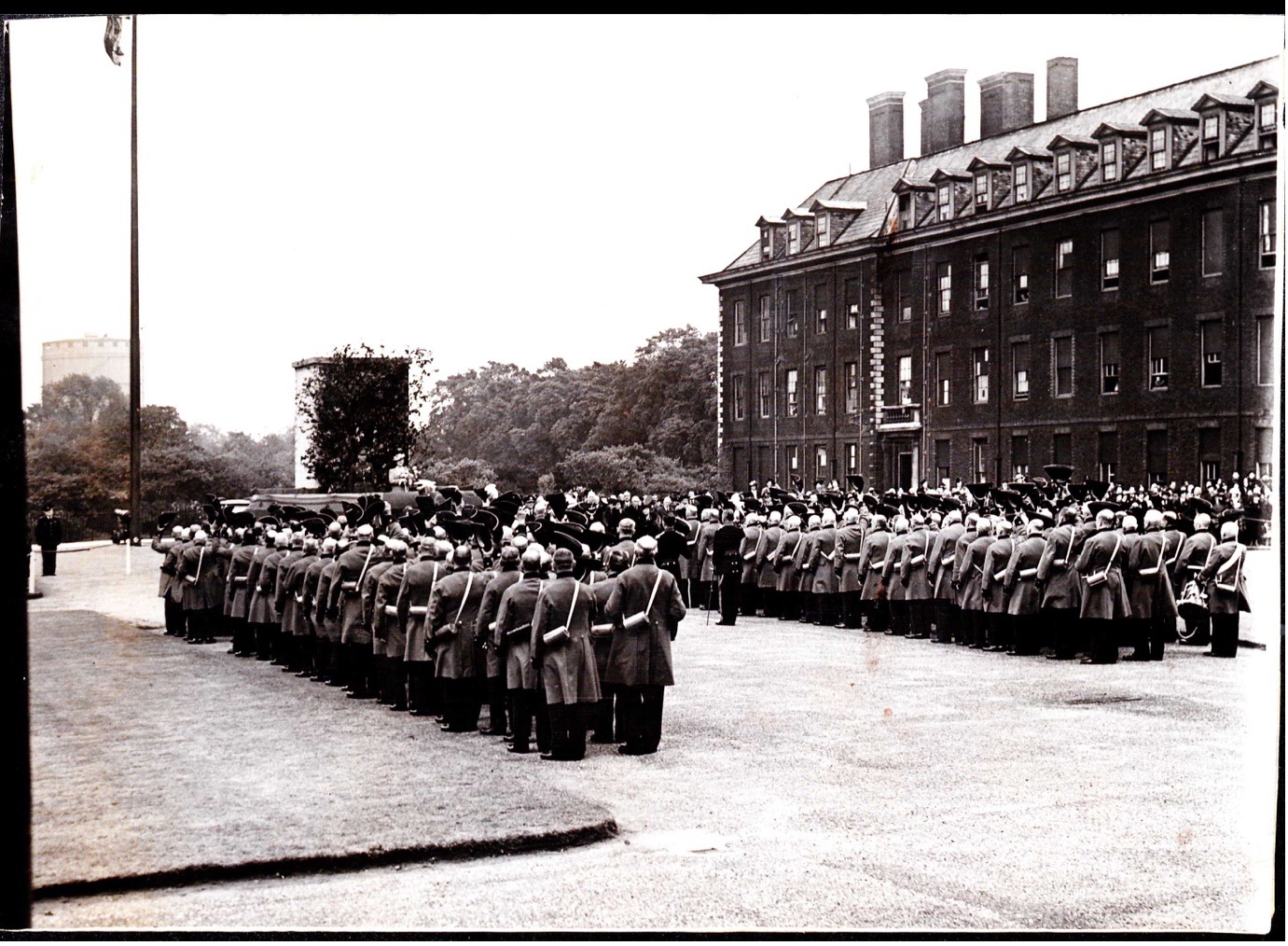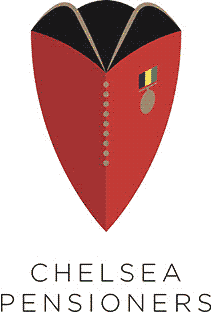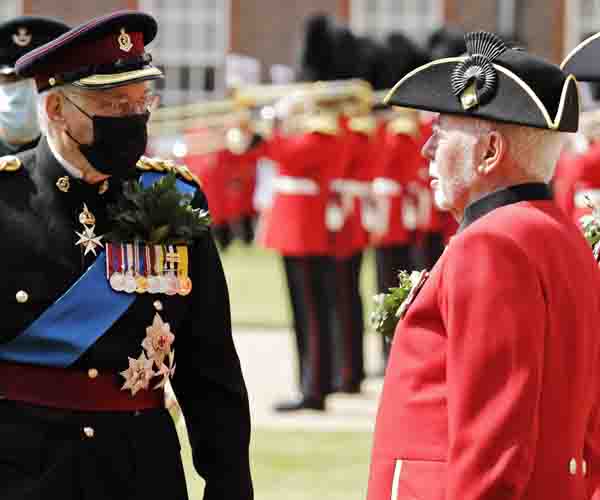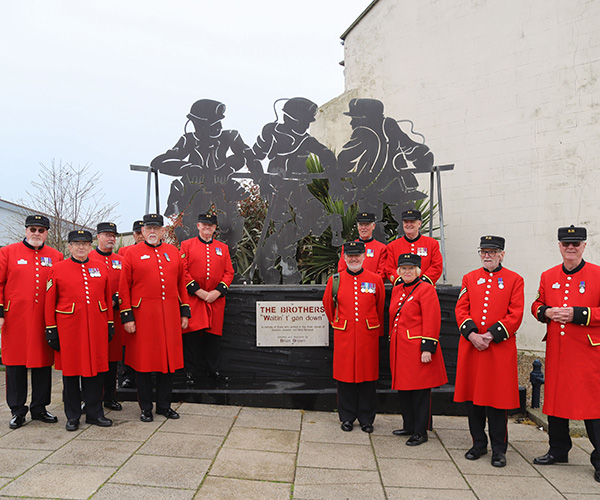The story behind the statue
13th August 2021
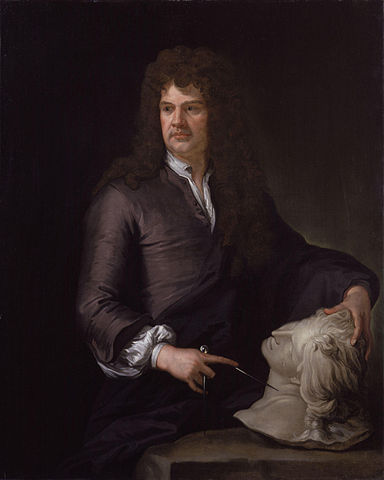
Three centuries after his death, Grinling Gibbons’ iconic statue still shines in Figure Court.
On 3 August 2021 it will be 300 years since Grinling Gibbons’ death. Gibbons is celebrated as arguably the greatest decorative wood carver in British history. However, at the Royal Hospital we know him as the artist responsible for the striking gilded statue of our founder that stands in Figure Court – named in its honour.
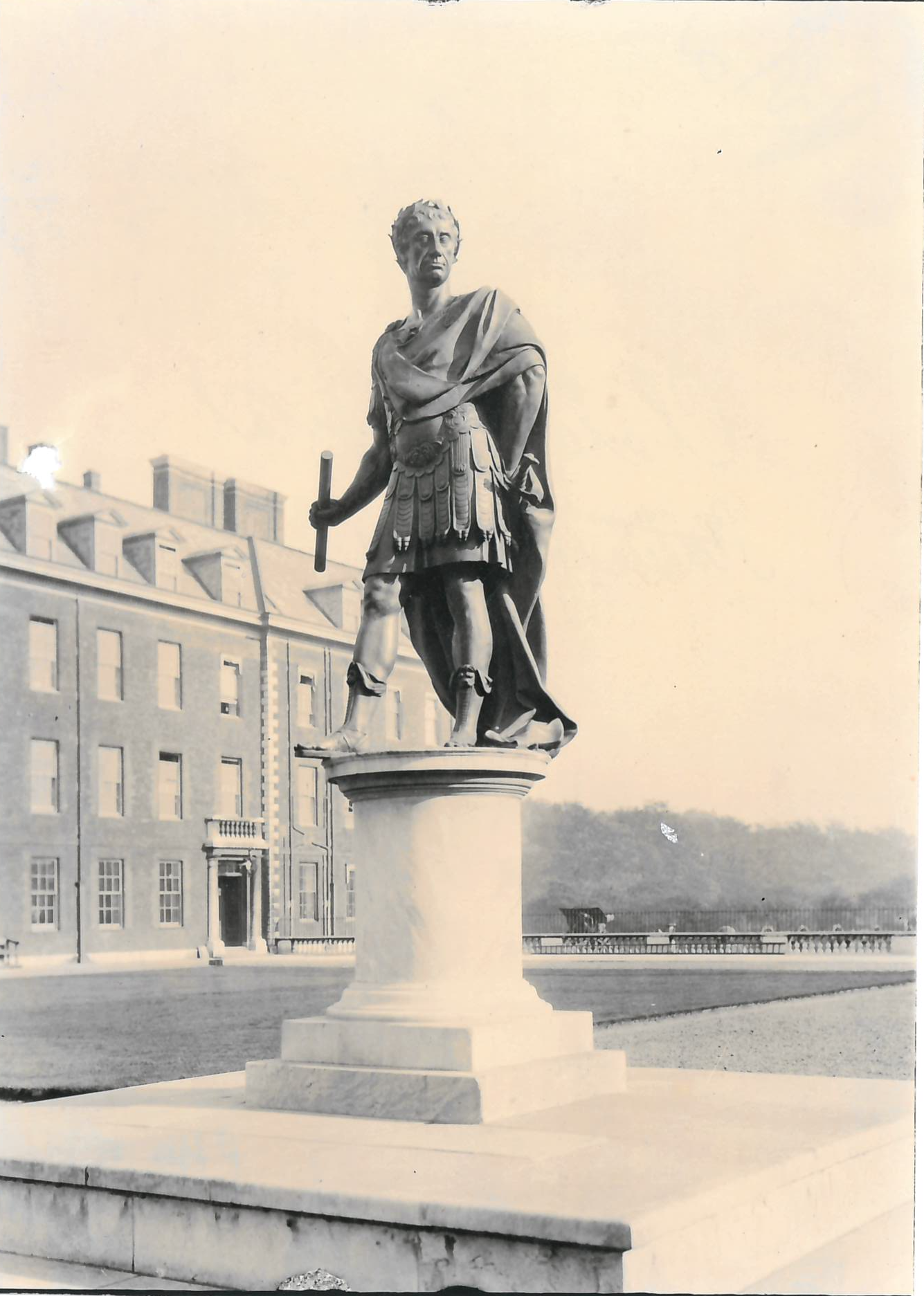
From humble apprentice to Royal favourite
Grinling Gibbons was born on 4 April 1648 in Rotterdam to English parents. After an apprenticeship in sculpting, he came to England in 1667. His prodigious talent soon captured the interest of influential people, including diarist John Evelyn and Royal artist Sir Peter Lely. Before long, he was brought to the attention of the current King, Charles II.
Gibbons’ first Royal commission was to remodel Windsor Castle and he continued to work for monarchs from Charles II to George I. The many places where he left his mark include St Paul’s Cathedral, Whitehall and Kensington Palaces, Hampton Court, Trinity College in both Oxford and Cambridge, Blenheim, Badminton, Petworth House and St James’s Piccadilly.

Although he also worked in stone, brass and bronze, Gibbons is best known for his elaborate, three-dimensional wood carvings featuring fruit, foliage and flowers and animals. The detail of his carving was so convincing that his great admirer Horace Walpole once fooled his dinner party guests by wearing a ‘lace’ cravat carved by Gibbons – it is now in the Victoria and Albert Museum.
Gibbons was a clever businessman too and forged partnerships with architects including Nicholas Hawksmoor and Sir Christopher Wren – who designed the Royal Hospital. He became very successful, with 50 assistants working for him at his workshop near St Paul’s.
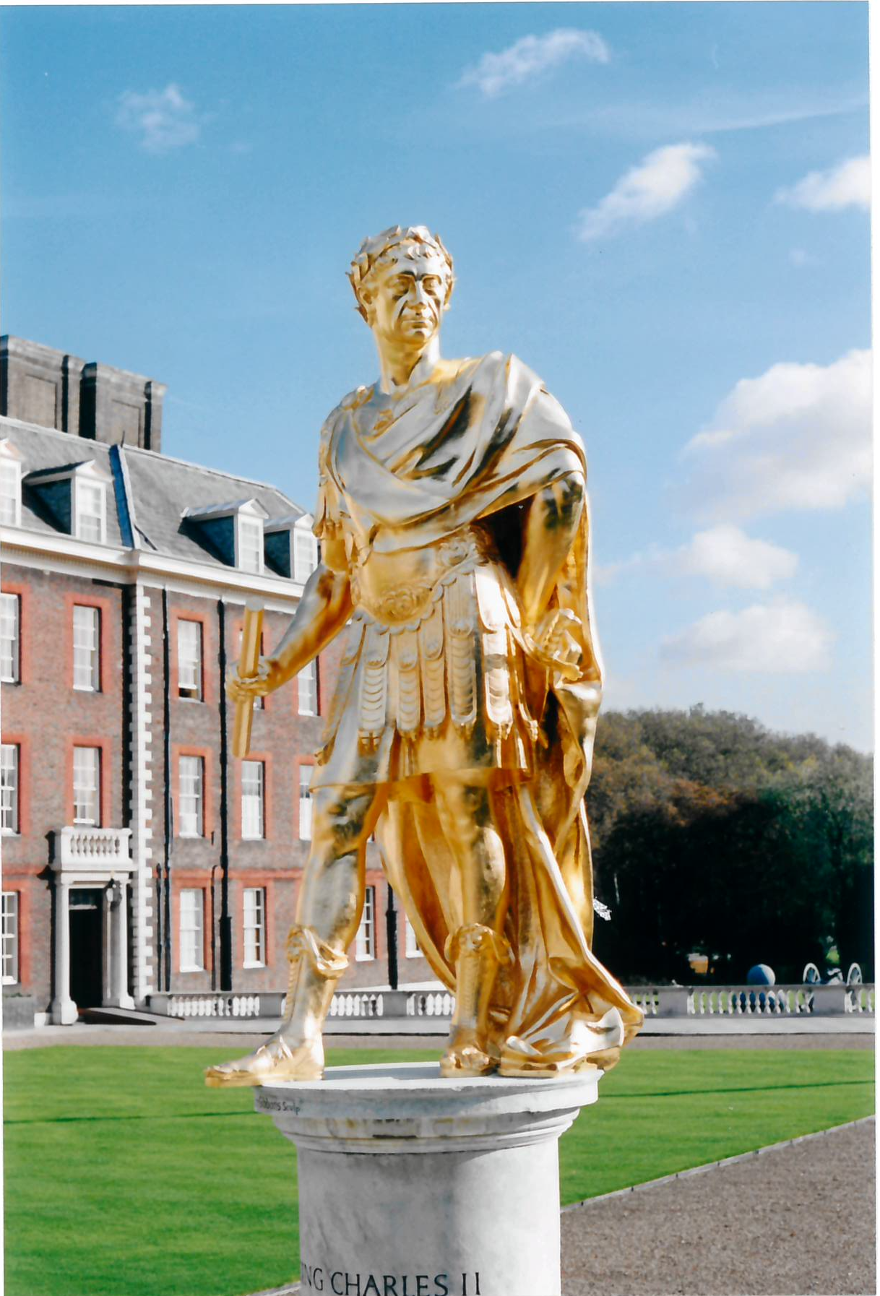
Gilded and glorious
The Grinling Gibbons statue in Figure Court is even older than the Royal Hospital. It was commissioned for a fee of £500 and presented to King Charles II by his loyal retainer Tobias Rustat in 1676. Standing 7.5 feet tall, it was cast in brass and originally gilded, before being bronzed in 1782. When it was regilded to commemorate HM The Queen’s Golden Jubilee in 2002, it was finally returned to its original golden glory.
Instead of showing the King with his customary wig and moustache, the statue portrays Charles II as a Roman General, complete with a wreath of laurel leaves and a baton indicating his authority. The heads of Cavalier King Charles’ spaniels – the dogs the monarch was so fond of – adorn his sandals.
It’s thought that the statue was originally at Whitehall Palace. It may have been moved to make way for Gibbons’ statue of King James II – also a present from Rustat – which was erected in 1686. As Rustat was a benefactor of the Royal Hospital, it’s likely he persuaded King James II to move the founder’s statue there. The statue was stored in the Great Hall while a pedestal was made ready, before being placed in its current position between 1688 and 1682. Today, the statue still stands proudly where one Augustine Harris installed it – for the princely price of £3 - more than three centuries ago.
Every year, the statue is decked with oak leaves to mark the Royal Hospital’s Founder’s Day celebrations. Even when it was bricked in to protect it from the Blitz, the bricks were adorned with the traditional foliage of oak leaves.
